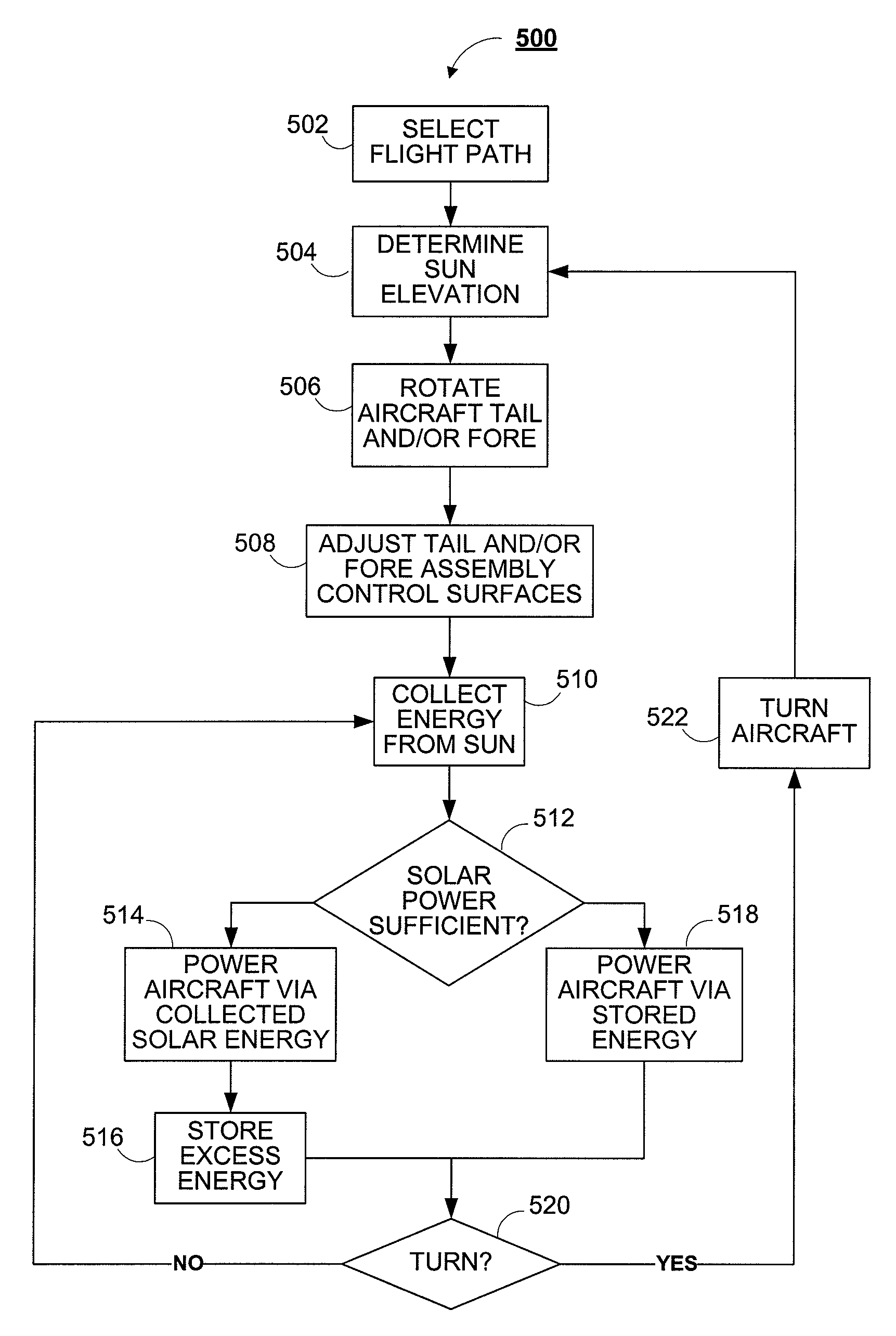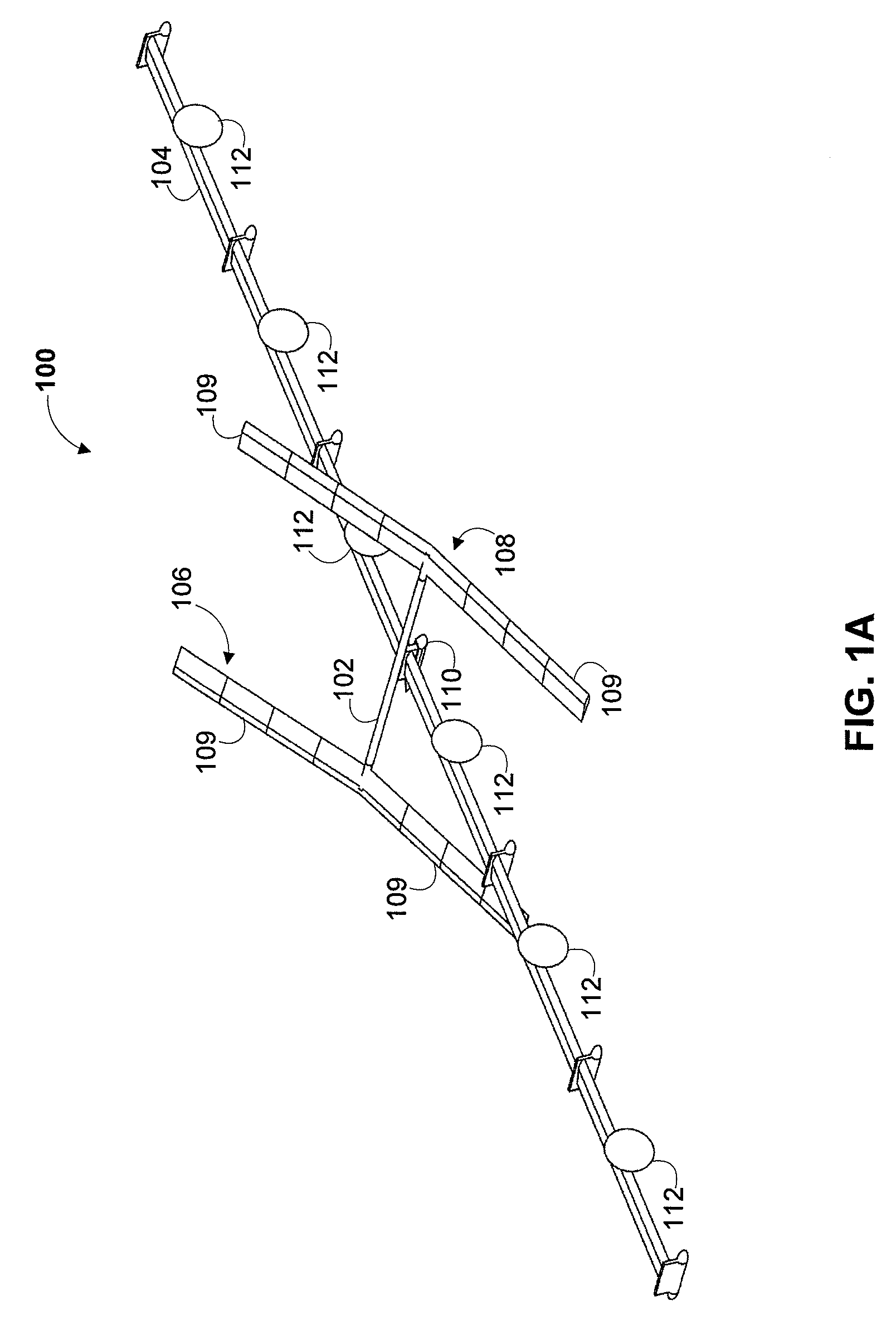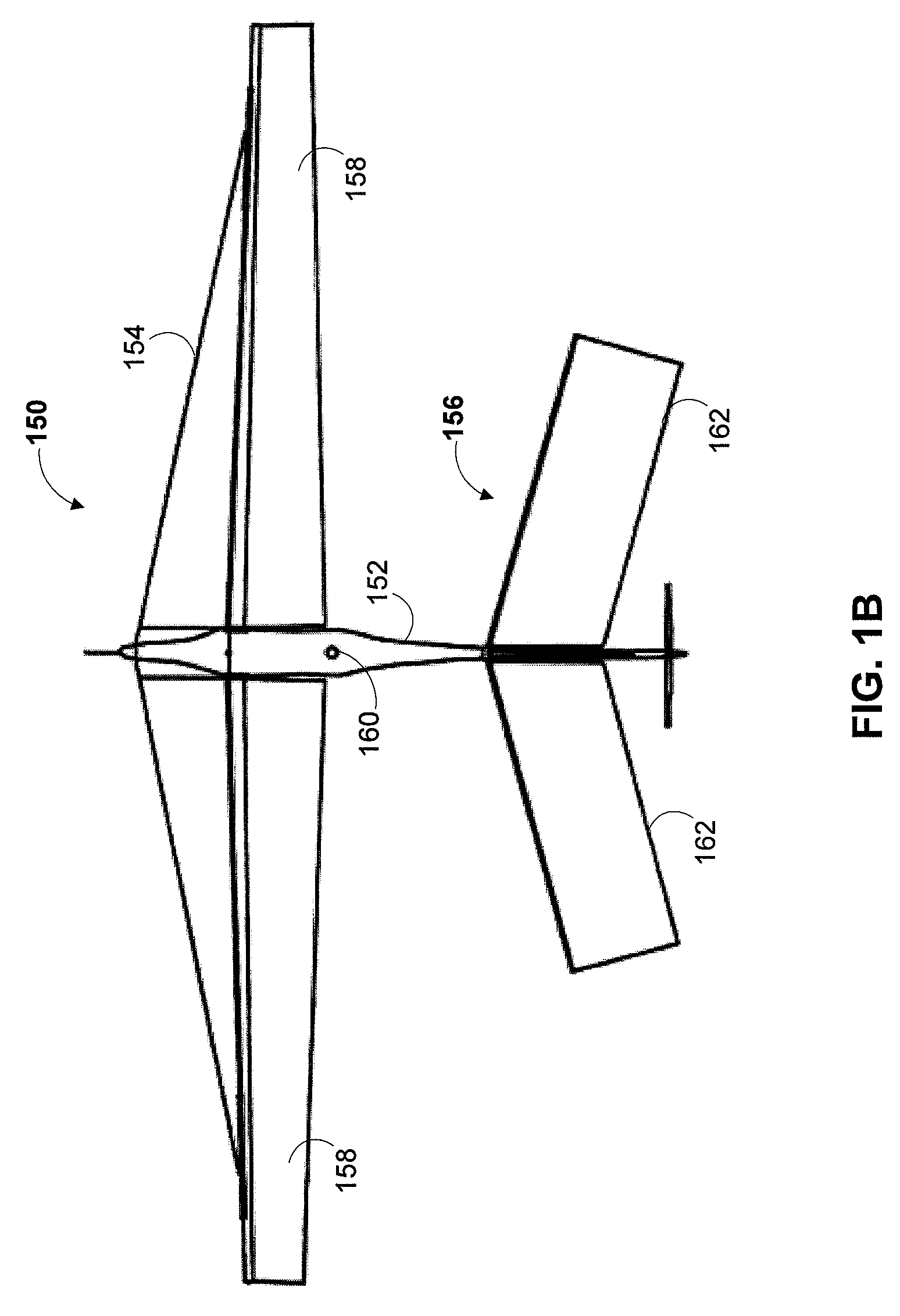Solar-powered aircraft with rotating flight surfaces
a technology of rotating flight surface and solar energy, which is applied in the direction of fuel cell details, process and machine control, and navigation instruments, etc., can solve the problems of reduced sun exposure, reduced flight surface area, and increased weight of solar arrays, so as to increase the exposure of solar cells to the sun, increase the exposure of fins to sunlight during flight, and increase the effect of sun exposur
- Summary
- Abstract
- Description
- Claims
- Application Information
AI Technical Summary
Benefits of technology
Problems solved by technology
Method used
Image
Examples
Embodiment Construction
[0024]To provide an overall understanding of the invention, certain illustrative embodiments will now be described, including solar-powered aircraft and methods for their operation. However, it will be understood by one of ordinary skill in the art that the systems and methods described herein may be adapted and modified as is appropriate for the application being addressed and that the systems and methods described herein may be employed in other suitable applications, and that such other additions and modifications will not depart from the scope hereof.
[0025]FIG. 1A is a schematic diagram of solar-powered aircraft 100, according to an illustrative embodiment of the invention. The solar-powered aircraft includes a fuselage 102, a set of wings 104, a tail assembly 106, and a fore assembly 108, and a payload compartment 110. The solar-powered aircraft is propelled by a series of electric motors 112 mounted on the wings 104.
[0026]The fuselage 102 is formed from a light weight material...
PUM
 Login to View More
Login to View More Abstract
Description
Claims
Application Information
 Login to View More
Login to View More - R&D
- Intellectual Property
- Life Sciences
- Materials
- Tech Scout
- Unparalleled Data Quality
- Higher Quality Content
- 60% Fewer Hallucinations
Browse by: Latest US Patents, China's latest patents, Technical Efficacy Thesaurus, Application Domain, Technology Topic, Popular Technical Reports.
© 2025 PatSnap. All rights reserved.Legal|Privacy policy|Modern Slavery Act Transparency Statement|Sitemap|About US| Contact US: help@patsnap.com



